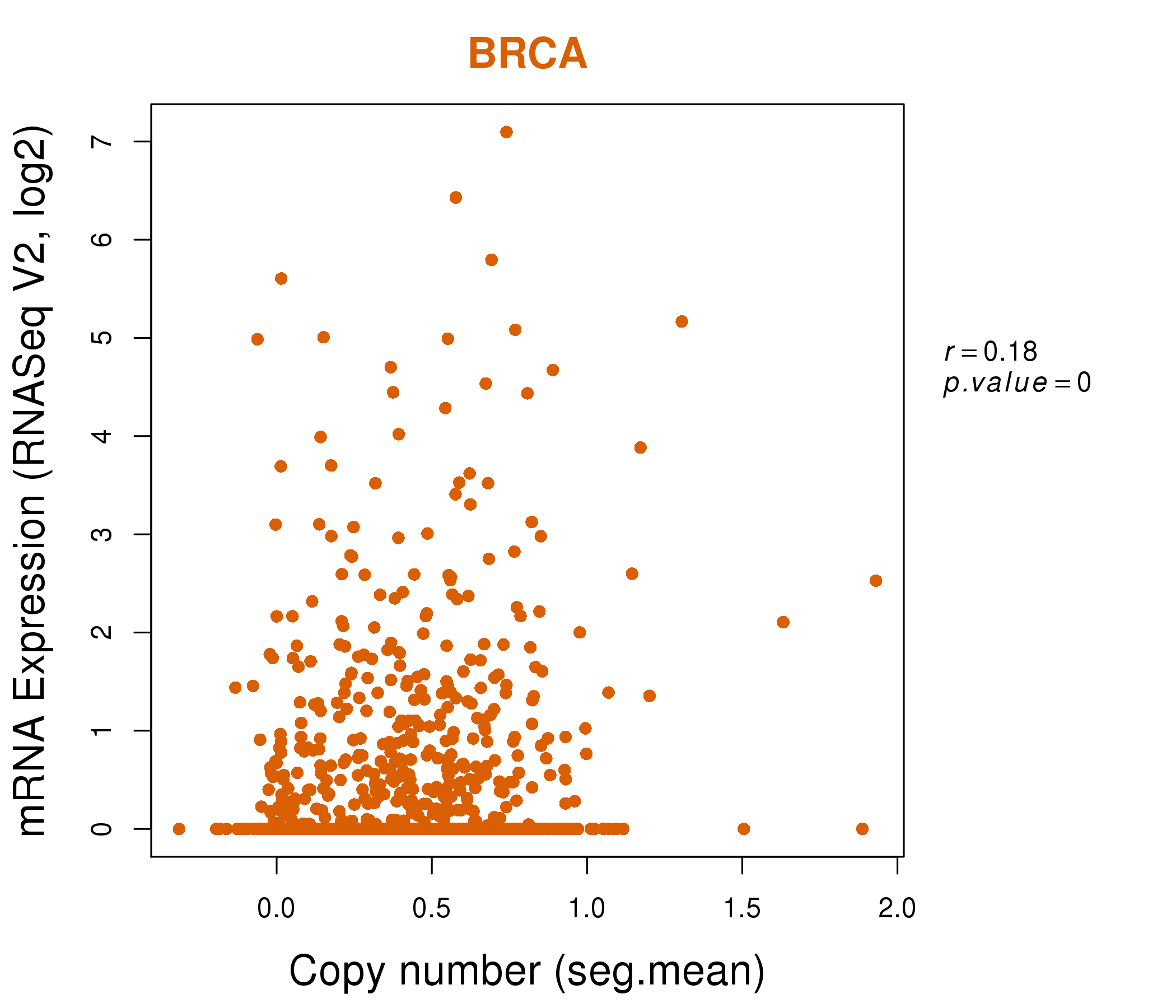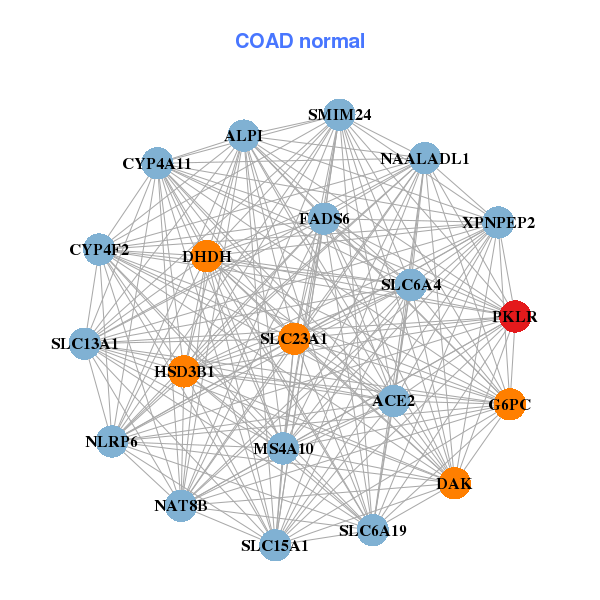|
|||||||||||||||||||||||||||||||||||||||||||||||||||||||||||||||||||||||||||||||||||||||||||||||||||||||||||||||||||||||||||||||||||||||||||||||||||||||||||||||||||||||||||||||||||||||||||||||||||||||||||||||||||||||||||||||||||||||||||||||||||||||||||||||||||||||||||||||||||||||||||||||||||||||||||||||||||||||||||||||||||||||||||||||||||||||||||||||||||||||||||||||||||||||||||||||||||
| |
| Phenotypic Information (metabolism pathway, cancer, disease, phenome) |
| |
| |
| Gene-Gene Network Information: Co-Expression Network, Interacting Genes & KEGG |
| |
|
| Gene Summary for PKLR |
| Basic gene info. | Gene symbol | PKLR |
| Gene name | pyruvate kinase, liver and RBC | |
| Synonyms | PK1|PKL|PKR|PKRL|RPK | |
| Cytomap | UCSC genome browser: 1q21 | |
| Genomic location | chr1 :155259083-155271225 | |
| Type of gene | protein-coding | |
| RefGenes | NM_000298.5, NM_181871.3, | |
| Ensembl id | ENSG00000262785 | |
| Description | R-type/L-type pyruvate kinasepyruvate kinase 1pyruvate kinase PKLRpyruvate kinase isozyme R/Lpyruvate kinase isozymes L/Rpyruvate kinase isozymes R/Lpyruvate kinase type Lpyruvate kinase, liver and blood cellred cell/liver pyruvate kinase | |
| Modification date | 20141207 | |
| dbXrefs | MIM : 609712 | |
| HGNC : HGNC | ||
| Ensembl : ENSG00000143627 | ||
| HPRD : 11841 | ||
| Vega : OTTHUMG00000035875 | ||
| Protein | UniProt: go to UniProt's Cross Reference DB Table | |
| Expression | CleanEX: HS_PKLR | |
| BioGPS: 5313 | ||
| Gene Expression Atlas: ENSG00000262785 | ||
| The Human Protein Atlas: ENSG00000262785 | ||
| Pathway | NCI Pathway Interaction Database: PKLR | |
| KEGG: PKLR | ||
| REACTOME: PKLR | ||
| ConsensusPathDB | ||
| Pathway Commons: PKLR | ||
| Metabolism | MetaCyc: PKLR | |
| HUMANCyc: PKLR | ||
| Regulation | Ensembl's Regulation: ENSG00000262785 | |
| miRBase: chr1 :155,259,083-155,271,225 | ||
| TargetScan: NM_000298 | ||
| cisRED: ENSG00000262785 | ||
| Context | iHOP: PKLR | |
| cancer metabolism search in PubMed: PKLR | ||
| UCL Cancer Institute: PKLR | ||
| Assigned class in ccmGDB | C | |
| Top |
| Phenotypic Information for PKLR(metabolism pathway, cancer, disease, phenome) |
| Cancer | CGAP: PKLR |
| Familial Cancer Database: PKLR | |
| * This gene is included in those cancer gene databases. |
|
|
|
|
|
|
| |||||||||||||||||||||||||||||||||||||||||||||||||||||||||||||||||||||||||||||||||||||||||||||||||||||||||||||||||||||||||||||||||||||||||||||||||||||||||||||||||||||||||||||||||||||||||||||||||||||||||||||||||||||||||||||||||||||||||||||||||||||||||||||||||||||||||||||||||||||||||||||||||||||||||||||||||||||||||||||||||||||||||||||||||||||||||||||||||||||||||||||||||||||||||||||
Oncogene 1 | Significant driver gene in | ||||||||||||||||||||||||||||||||||||||||||||||||||||||||||||||||||||||||||||||||||||||||||||||||||||||||||||||||||||||||||||||||||||||||||||||||||||||||||||||||||||||||||||||||||||||||||||||||||||||||||||||||||||||||||||||||||||||||||||||||||||||||||||||||||||||||||||||||||||||||||||||||||||||||||||||||||||||||||||||||||||||||||||||||||||||||||||||||||||||||||||||||||||||||||||||||||
| cf) number; DB name 1 Oncogene; http://nar.oxfordjournals.org/content/35/suppl_1/D721.long, 2 Tumor Suppressor gene; https://bioinfo.uth.edu/TSGene/, 3 Cancer Gene Census; http://www.nature.com/nrc/journal/v4/n3/abs/nrc1299.html, 4 CancerGenes; http://nar.oxfordjournals.org/content/35/suppl_1/D721.long, 5 Network of Cancer Gene; http://ncg.kcl.ac.uk/index.php, 1Therapeutic Vulnerabilities in Cancer; http://cbio.mskcc.org/cancergenomics/statius/ |
| KEGG_GLYCOLYSIS_GLUCONEOGENESIS KEGG_PURINE_METABOLISM KEGG_PYRUVATE_METABOLISM BIOCARTA_GLYCOLYSIS_PATHWAY REACTOME_INTEGRATION_OF_ENERGY_METABOLISM REACTOME_METABOLISM_OF_CARBOHYDRATES REACTOME_GLUCOSE_METABOLISM | |
| OMIM | |
| Orphanet | |
| Disease | KEGG Disease: PKLR |
| MedGen: PKLR (Human Medical Genetics with Condition) | |
| ClinVar: PKLR | |
| Phenotype | MGI: PKLR (International Mouse Phenotyping Consortium) |
| PhenomicDB: PKLR | |
| Mutations for PKLR |
| * Under tables are showing count per each tissue to give us broad intuition about tissue specific mutation patterns.You can go to the detailed page for each mutation database's web site. |
| - Statistics for Tissue and Mutation type | Top |
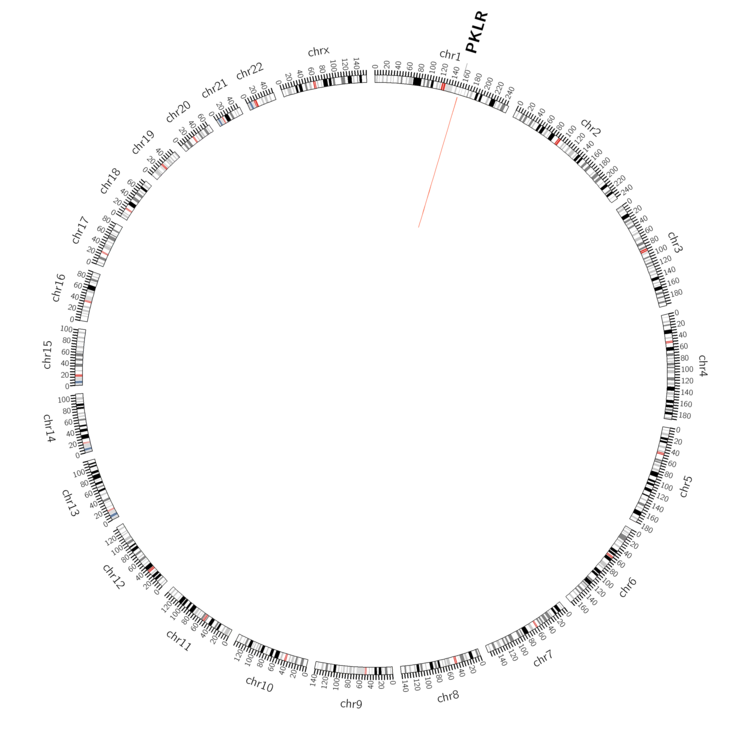 |
| - For Inter-chromosomal Variations |
| There's no inter-chromosomal structural variation. |
| - For Intra-chromosomal Variations |
| * Intra-chromosomal variantions includes 'intrachromosomal amplicon to amplicon', 'intrachromosomal amplicon to non-amplified dna', 'intrachromosomal deletion', 'intrachromosomal fold-back inversion', 'intrachromosomal inversion', 'intrachromosomal tandem duplication', 'Intrachromosomal unknown type', 'intrachromosomal with inverted orientation', 'intrachromosomal with non-inverted orientation'. |
 |
| Sample | Symbol_a | Chr_a | Start_a | End_a | Symbol_b | Chr_b | Start_b | End_b |
| pancreas | PKLR | chr1 | 155270488 | 155270508 | chr1 | 155062638 | 155062658 |
| cf) Tissue number; Tissue name (1;Breast, 2;Central_nervous_system, 3;Haematopoietic_and_lymphoid_tissue, 4;Large_intestine, 5;Liver, 6;Lung, 7;Ovary, 8;Pancreas, 9;Prostate, 10;Skin, 11;Soft_tissue, 12;Upper_aerodigestive_tract) |
| * From mRNA Sanger sequences, Chitars2.0 arranged chimeric transcripts. This table shows PKLR related fusion information. |
| ID | Head Gene | Tail Gene | Accession | Gene_a | qStart_a | qEnd_a | Chromosome_a | tStart_a | tEnd_a | Gene_a | qStart_a | qEnd_a | Chromosome_a | tStart_a | tEnd_a |
| Top |
| Mutation type/ Tissue ID | brca | cns | cerv | endome | haematopo | kidn | Lintest | liver | lung | ns | ovary | pancre | prost | skin | stoma | thyro | urina | |||
| Total # sample | 1 | |||||||||||||||||||
| GAIN (# sample) | 1 | |||||||||||||||||||
| LOSS (# sample) |
| cf) Tissue ID; Tissue type (1; Breast, 2; Central_nervous_system, 3; Cervix, 4; Endometrium, 5; Haematopoietic_and_lymphoid_tissue, 6; Kidney, 7; Large_intestine, 8; Liver, 9; Lung, 10; NS, 11; Ovary, 12; Pancreas, 13; Prostate, 14; Skin, 15; Stomach, 16; Thyroid, 17; Urinary_tract) |
| Top |
|
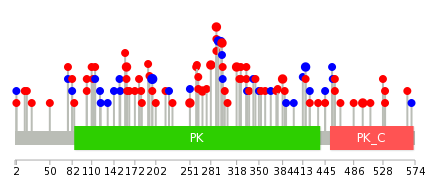 |
| Top |
| Stat. for Non-Synonymous SNVs (# total SNVs=54) | (# total SNVs=17) |
 |  |
(# total SNVs=2) | (# total SNVs=0) |
 |
| Top |
| * When you move the cursor on each content, you can see more deailed mutation information on the Tooltip. Those are primary_site,primary_histology,mutation(aa),pubmedID. |
| GRCh37 position | Mutation(aa) | Unique sampleID count |
| chr1:155265256-155265256 | p.P160Q | 3 |
| chr1:155265010-155265010 | p.A197A | 3 |
| chr1:155265524-155265524 | p.R103S | 2 |
| chr1:155264349-155264349 | p.V297I | 2 |
| chr1:155263347-155263347 | p.T384M | 2 |
| chr1:155263135-155263135 | p.? | 2 |
| chr1:155264147-155264147 | p.G332V | 2 |
| chr1:155261669-155261669 | p.S499F | 2 |
| chr1:155264362-155264362 | p.S292S | 2 |
| chr1:155264172-155264172 | p.D324N | 2 |
| Top |
|
 |
| Point Mutation/ Tissue ID | 1 | 2 | 3 | 4 | 5 | 6 | 7 | 8 | 9 | 10 | 11 | 12 | 13 | 14 | 15 | 16 | 17 | 18 | 19 | 20 |
| # sample | 1 | 3 | 12 | 2 | 1 | 1 | 15 | 6 | 1 | 11 | 11 | 1 | 5 | |||||||
| # mutation | 1 | 3 | 13 | 2 | 1 | 1 | 15 | 6 | 1 | 12 | 11 | 1 | 7 | |||||||
| nonsynonymous SNV | 1 | 3 | 6 | 1 | 1 | 1 | 14 | 3 | 1 | 8 | 5 | 5 | ||||||||
| synonymous SNV | 7 | 1 | 1 | 3 | 4 | 6 | 1 | 2 |
| cf) Tissue ID; Tissue type (1; BLCA[Bladder Urothelial Carcinoma], 2; BRCA[Breast invasive carcinoma], 3; CESC[Cervical squamous cell carcinoma and endocervical adenocarcinoma], 4; COAD[Colon adenocarcinoma], 5; GBM[Glioblastoma multiforme], 6; Glioma Low Grade, 7; HNSC[Head and Neck squamous cell carcinoma], 8; KICH[Kidney Chromophobe], 9; KIRC[Kidney renal clear cell carcinoma], 10; KIRP[Kidney renal papillary cell carcinoma], 11; LAML[Acute Myeloid Leukemia], 12; LUAD[Lung adenocarcinoma], 13; LUSC[Lung squamous cell carcinoma], 14; OV[Ovarian serous cystadenocarcinoma ], 15; PAAD[Pancreatic adenocarcinoma], 16; PRAD[Prostate adenocarcinoma], 17; SKCM[Skin Cutaneous Melanoma], 18:STAD[Stomach adenocarcinoma], 19:THCA[Thyroid carcinoma], 20:UCEC[Uterine Corpus Endometrial Carcinoma]) |
| Top |
| * We represented just top 10 SNVs. When you move the cursor on each content, you can see more deailed mutation information on the Tooltip. Those are primary_site, primary_histology, mutation(aa), pubmedID. |
| Genomic Position | Mutation(aa) | Unique sampleID count |
| chr1:155264372 | p.R289Q,PKLR | 3 |
| chr1:155263259 | p.R289W,PKLR | 2 |
| chr1:155264362 | p.D324N,PKLR | 2 |
| chr1:155264373 | p.A417A,PKLR | 2 |
| chr1:155264172 | p.F413F,PKLR | 2 |
| chr1:155263247 | p.S292S,PKLR | 2 |
| chr1:155265309 | p.T164I,PKLR | 1 |
| chr1:155264116 | p.G478C,PKLR | 1 |
| chr1:155271181 | p.G358W,PKLR | 1 |
| chr1:155261655 | p.P160Q,PKLR | 1 |
| * Copy number data were extracted from TCGA using R package TCGA-Assembler. The URLs of all public data files on TCGA DCC data server were gathered on Jan-05-2015. Function ProcessCNAData in TCGA-Assembler package was used to obtain gene-level copy number value which is calculated as the average copy number of the genomic region of a gene. |
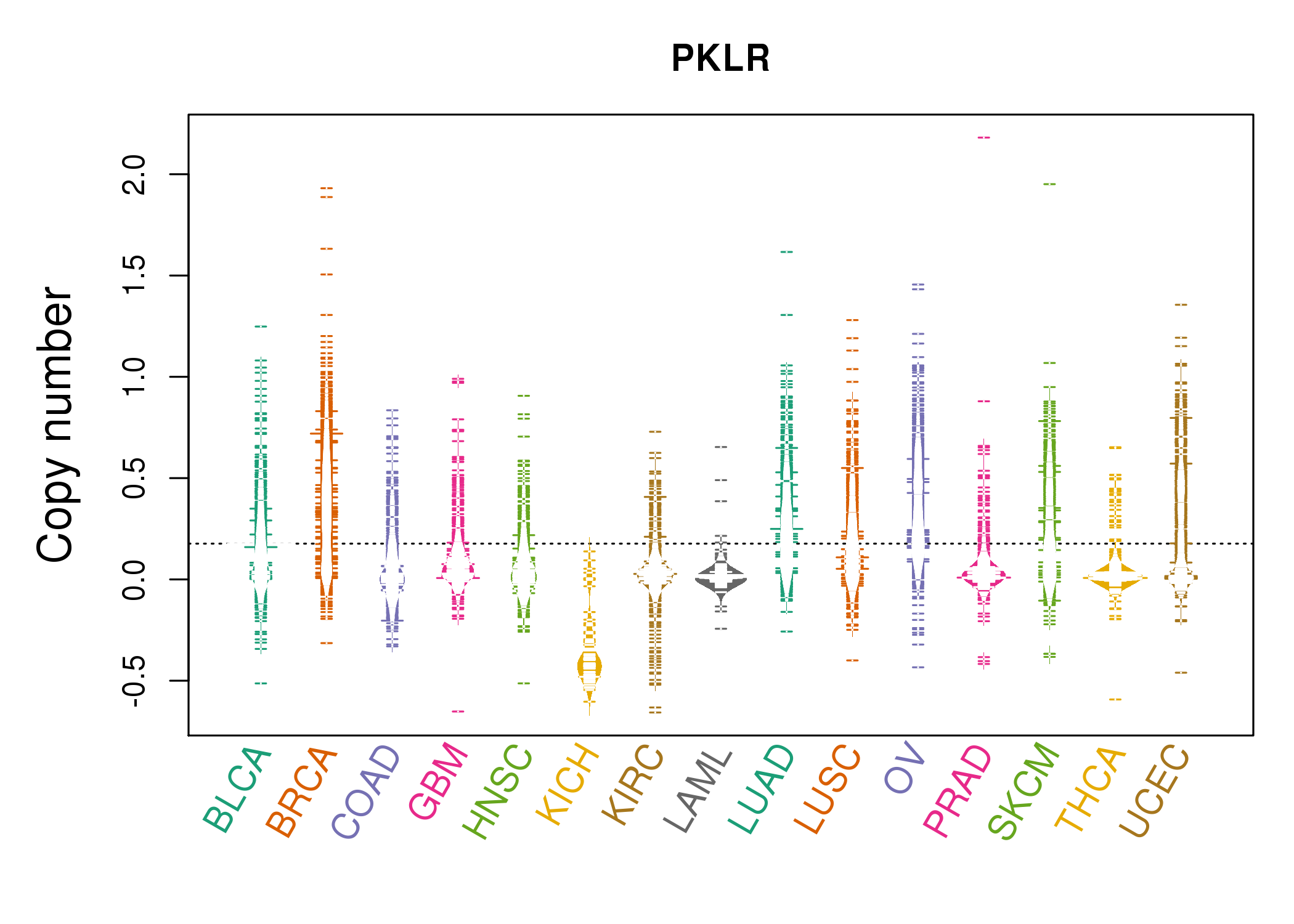 |
| cf) Tissue ID[Tissue type]: BLCA[Bladder Urothelial Carcinoma], BRCA[Breast invasive carcinoma], CESC[Cervical squamous cell carcinoma and endocervical adenocarcinoma], COAD[Colon adenocarcinoma], GBM[Glioblastoma multiforme], Glioma Low Grade, HNSC[Head and Neck squamous cell carcinoma], KICH[Kidney Chromophobe], KIRC[Kidney renal clear cell carcinoma], KIRP[Kidney renal papillary cell carcinoma], LAML[Acute Myeloid Leukemia], LUAD[Lung adenocarcinoma], LUSC[Lung squamous cell carcinoma], OV[Ovarian serous cystadenocarcinoma ], PAAD[Pancreatic adenocarcinoma], PRAD[Prostate adenocarcinoma], SKCM[Skin Cutaneous Melanoma], STAD[Stomach adenocarcinoma], THCA[Thyroid carcinoma], UCEC[Uterine Corpus Endometrial Carcinoma] |
| Top |
| Gene Expression for PKLR |
| * CCLE gene expression data were extracted from CCLE_Expression_Entrez_2012-10-18.res: Gene-centric RMA-normalized mRNA expression data. |
 |
| * Normalized gene expression data of RNASeqV2 was extracted from TCGA using R package TCGA-Assembler. The URLs of all public data files on TCGA DCC data server were gathered at Jan-05-2015. Only eight cancer types have enough normal control samples for differential expression analysis. (t test, adjusted p<0.05 (using Benjamini-Hochberg FDR)) |
 |
| Top |
| * This plots show the correlation between CNV and gene expression. |
: Open all plots for all cancer types
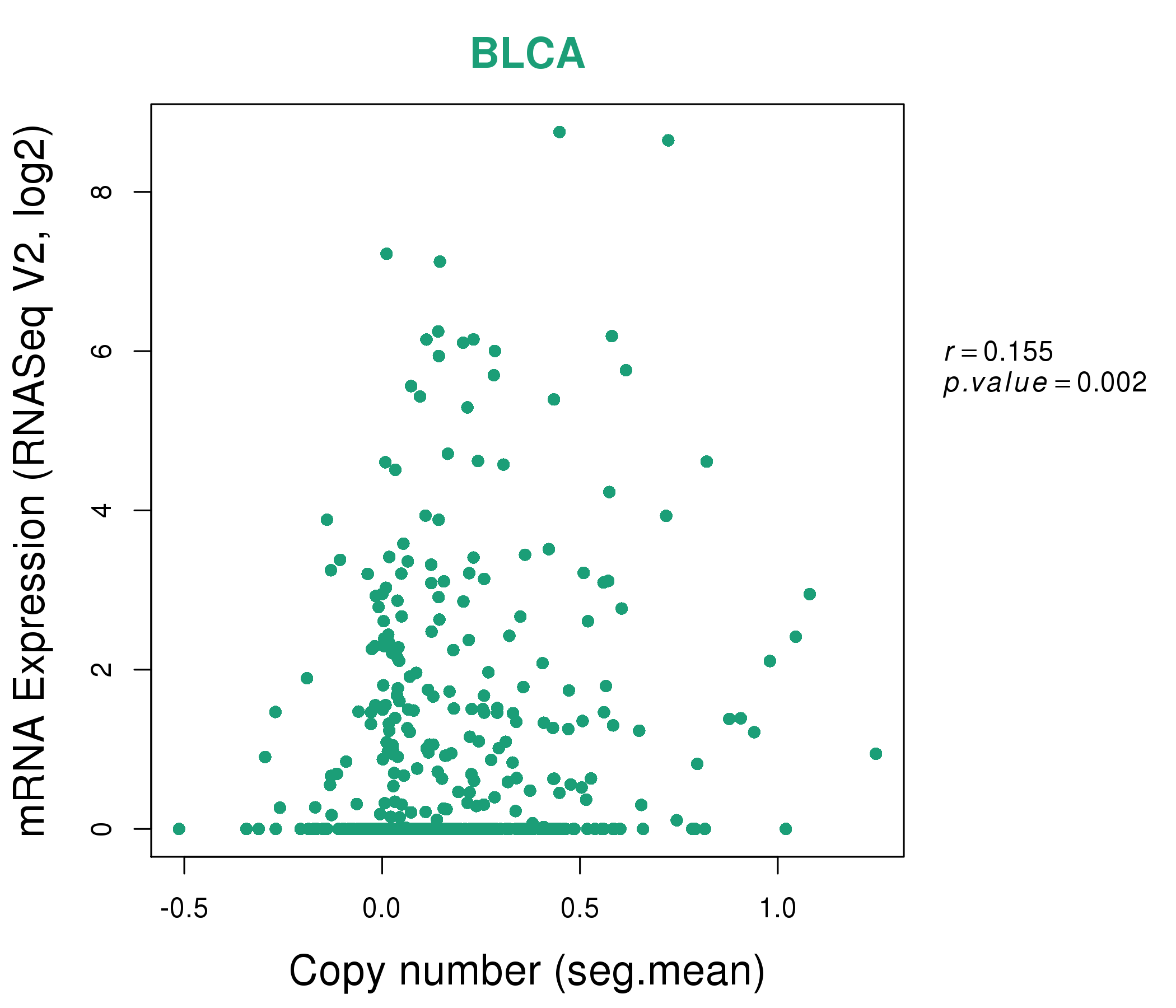 |
|
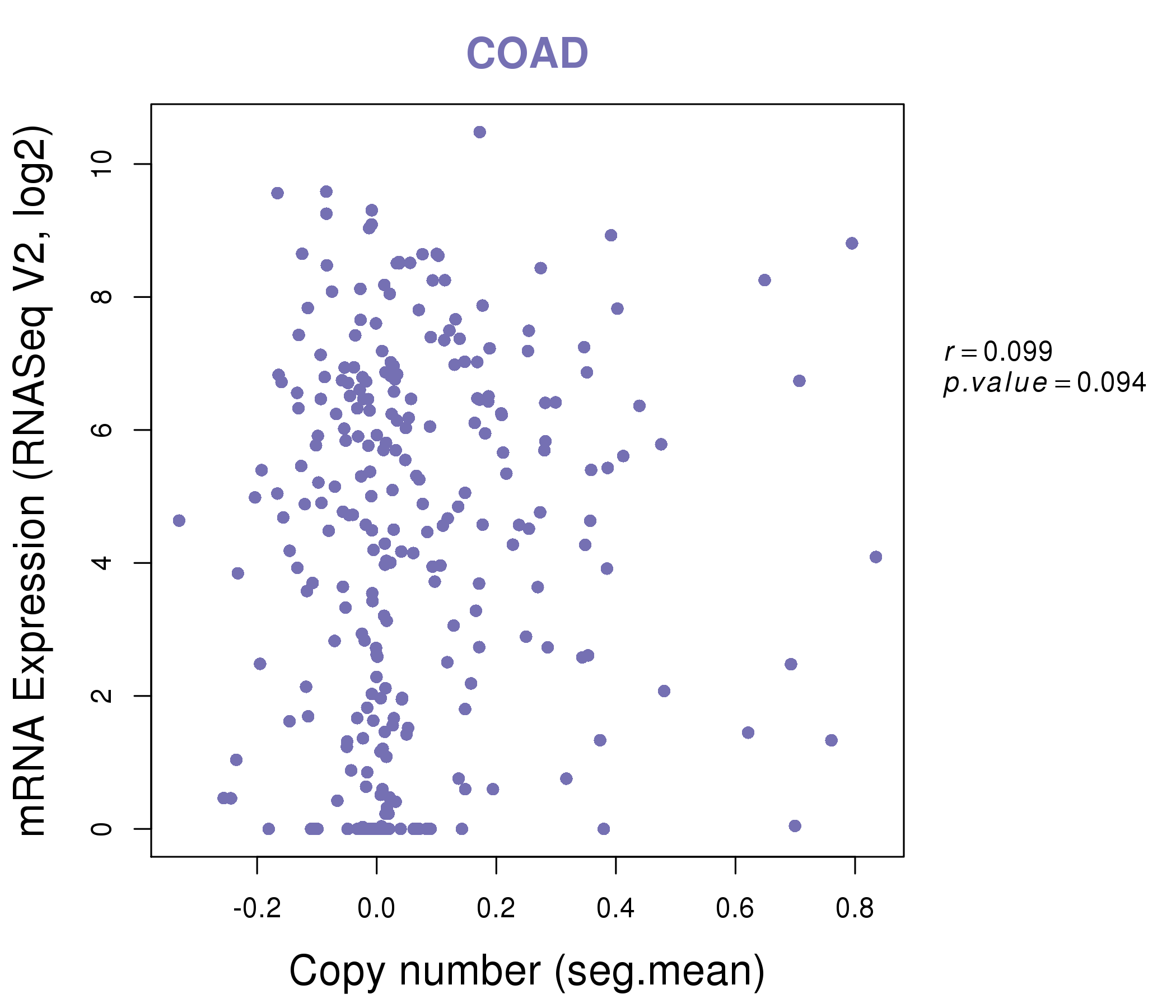 |
|
| Top |
| Gene-Gene Network Information |
| * Co-Expression network figures were drawn using R package igraph. Only the top 20 genes with the highest correlations were shown. Red circle: input gene, orange circle: cell metabolism gene, sky circle: other gene |
: Open all plots for all cancer types
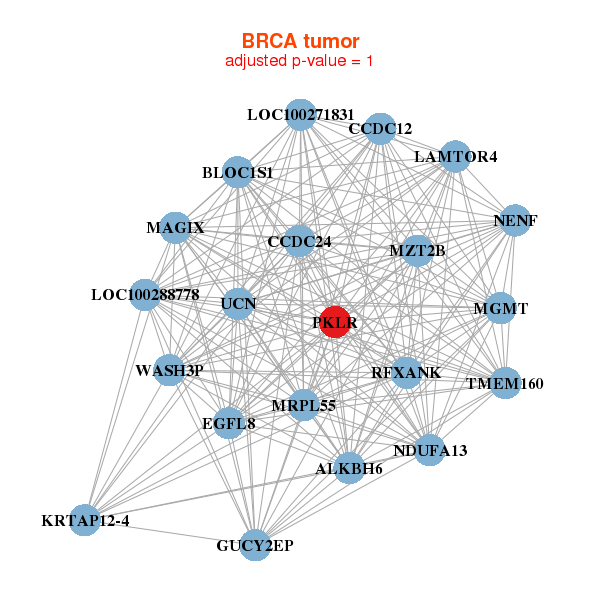 |
| ||||
| ALKBH6,BLOC1S1,LAMTOR4,CCDC12,CCDC24,EGFL8,MZT2B, GUCY2EP,KRTAP12-4,LOC100271831,LOC100288778,MAGIX,MGMT,MRPL55, NDUFA13,NENF,PKLR,RFXANK,TMEM160,UCN,WASH3P | AIFM3,TEX43,ARRDC1-AS1,CCDC130,CEMP1,DCST1,FOXH1, HES7,LOC100130386,LOC644172,ASMTL-AS1,PAQR6,PKLR,RAB24, RETNLB,SCGB1D1,TBC1D3B,TCP10,TEKT4,WASH2P,WASH3P | ||||
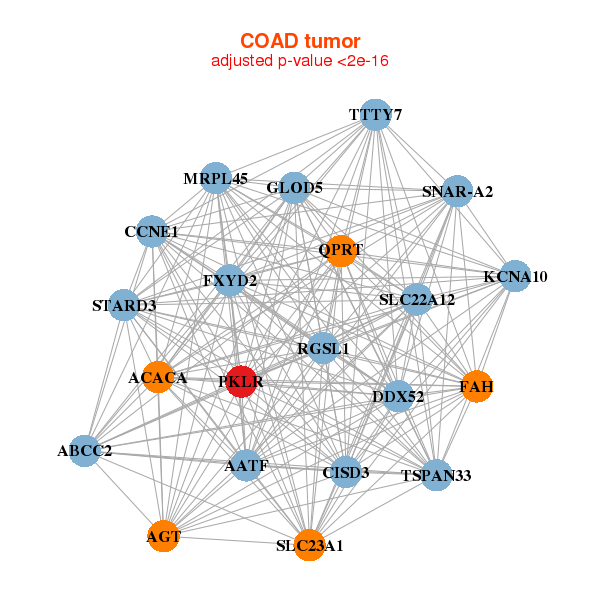 |
| ||||
| AATF,ABCC2,ACACA,AGT,CCNE1,CISD3,DDX52, FAH,FXYD2,GLOD5,KCNA10,MRPL45,PKLR,QPRT, RGSL1,SLC22A12,SLC23A1,SNAR-A2,STARD3,TSPAN33,TTTY7 | ACE2,ALPI,SMIM24,CYP4A11,CYP4F2,DAK,DHDH, FADS6,G6PC,HSD3B1,MS4A10,NAALADL1,NAT8B,NLRP6, PKLR,SLC13A1,SLC15A1,SLC23A1,SLC6A19,SLC6A4,XPNPEP2 |
| * Co-Expression network figures were drawn using R package igraph. Only the top 20 genes with the highest correlations were shown. Red circle: input gene, orange circle: cell metabolism gene, sky circle: other gene |
: Open all plots for all cancer types
| Top |
: Open all interacting genes' information including KEGG pathway for all interacting genes from DAVID
| Top |
| Pharmacological Information for PKLR |
| DB Category | DB Name | DB's ID and Url link |
| * Gene Centered Interaction Network. |
 |
| * Drug Centered Interaction Network. |
| DrugBank ID | Target Name | Drug Groups | Generic Name | Drug Centered Network | Drug Structure |
| DB00119 | pyruvate kinase, liver and RBC | approved; nutraceutical | Pyruvic acid | 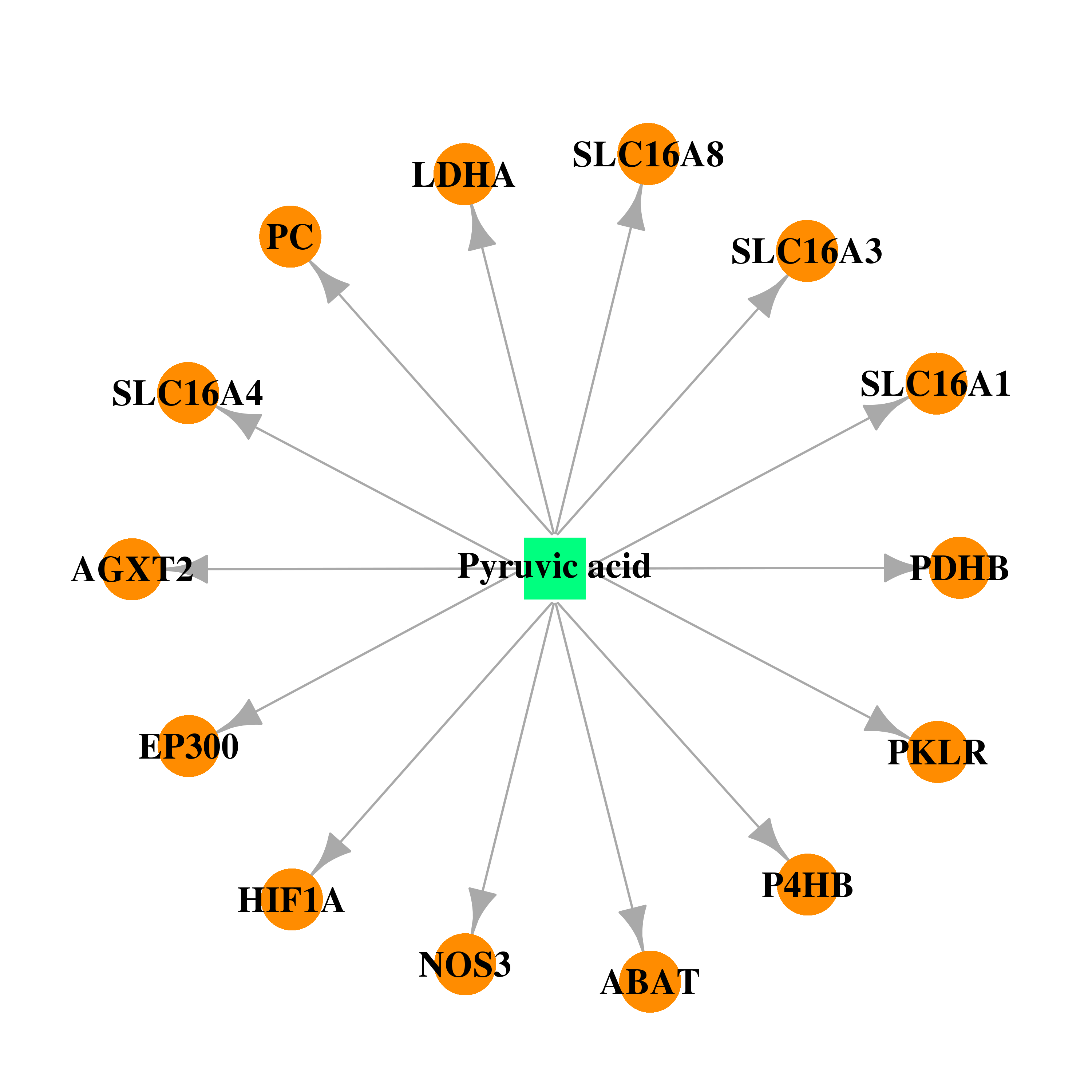 | 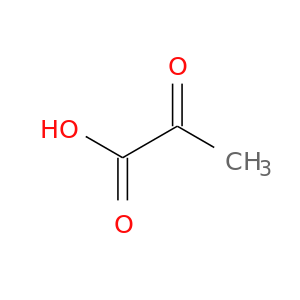 |
| DB02726 | pyruvate kinase, liver and RBC | experimental | 2-Phosphoglycolic Acid | 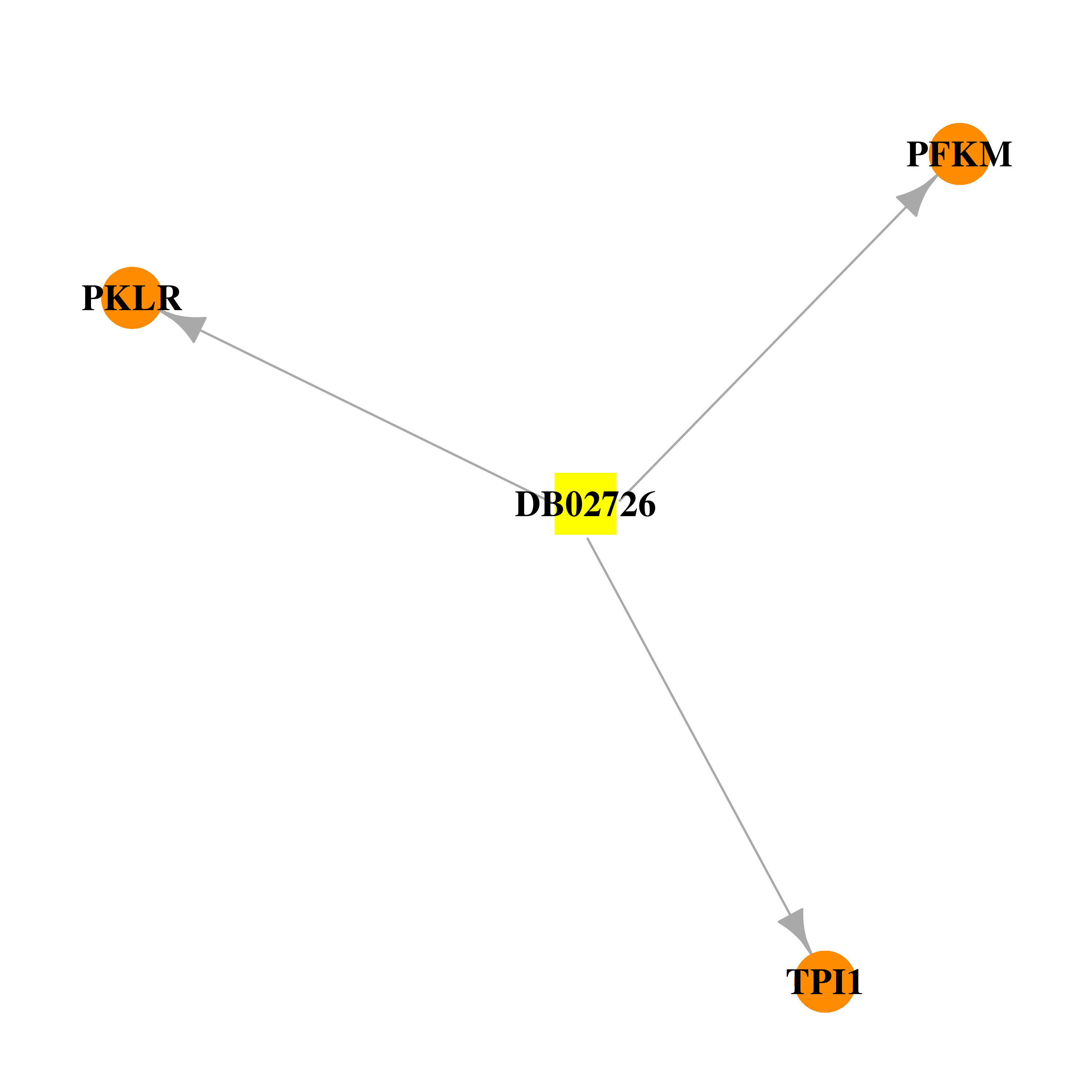 | 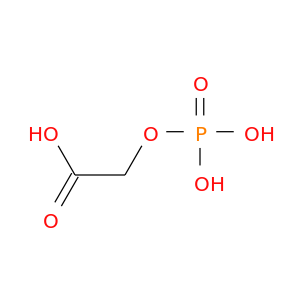 |
| DB04551 | pyruvate kinase, liver and RBC | experimental | Fructose-1,6-Diphosphate |  |  |
| DB00131 | pyruvate kinase, liver and RBC | approved; nutraceutical | Adenosine monophosphate | 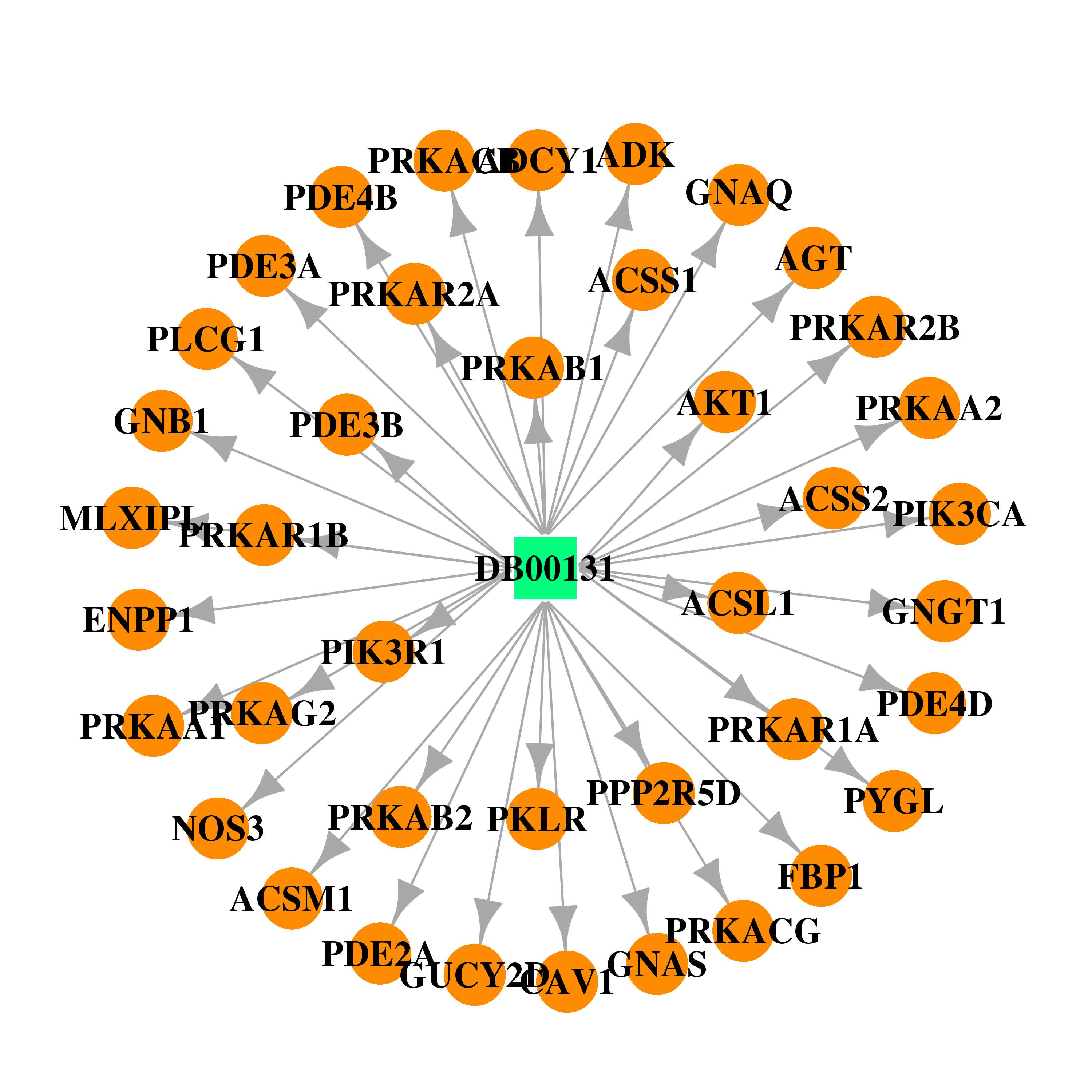 | 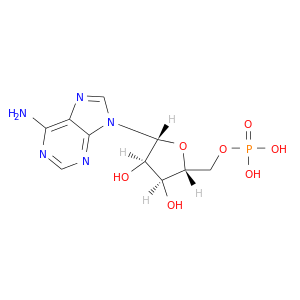 |
| DB00171 | pyruvate kinase, liver and RBC | approved; nutraceutical | Adenosine triphosphate |  |  |
| DB00630 | pyruvate kinase, liver and RBC | approved | Alendronate | 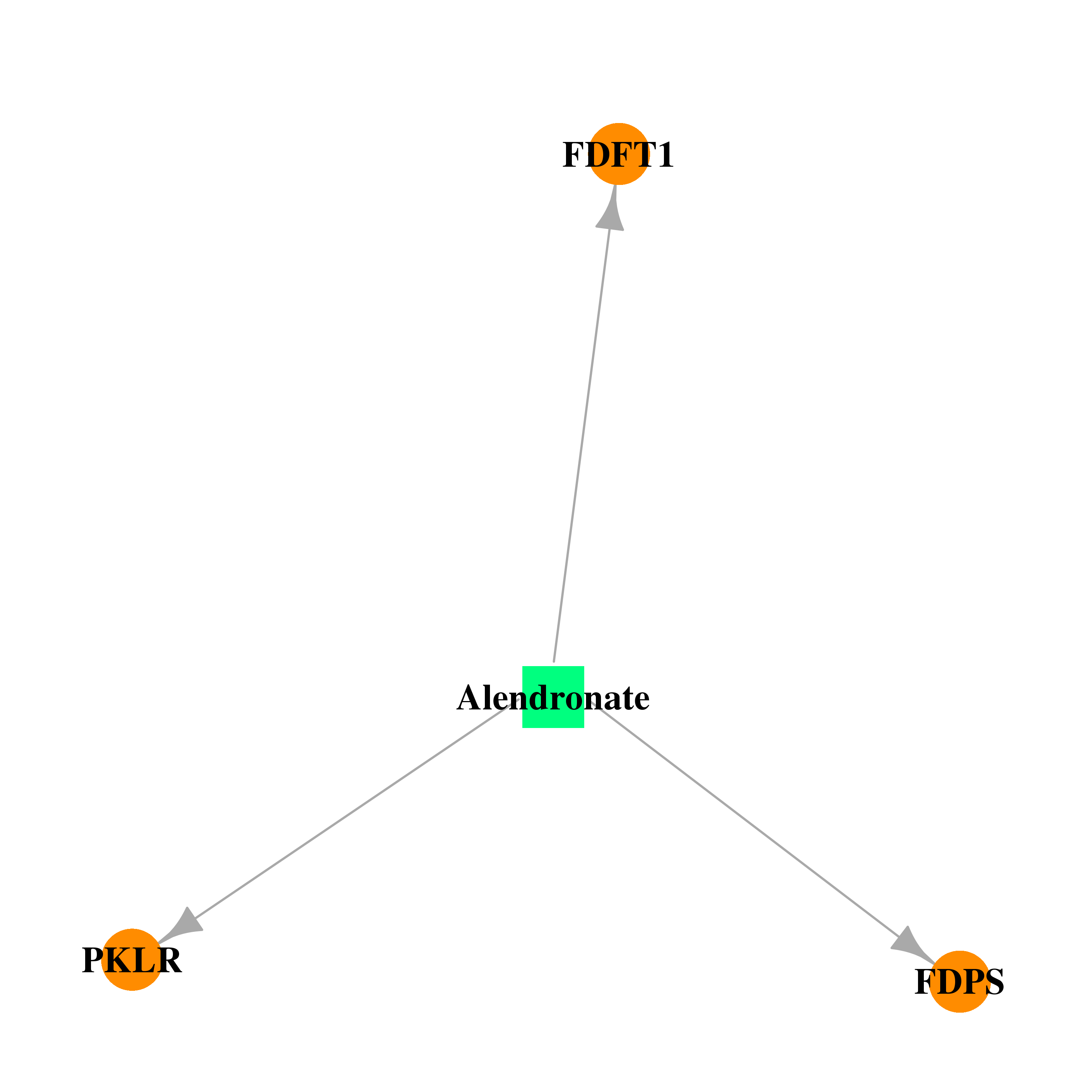 | 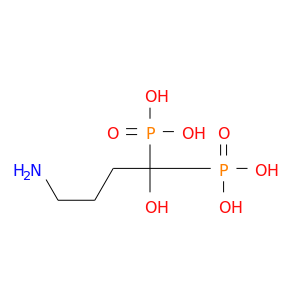 |
| DB00710 | pyruvate kinase, liver and RBC | approved; investigational | Ibandronate | 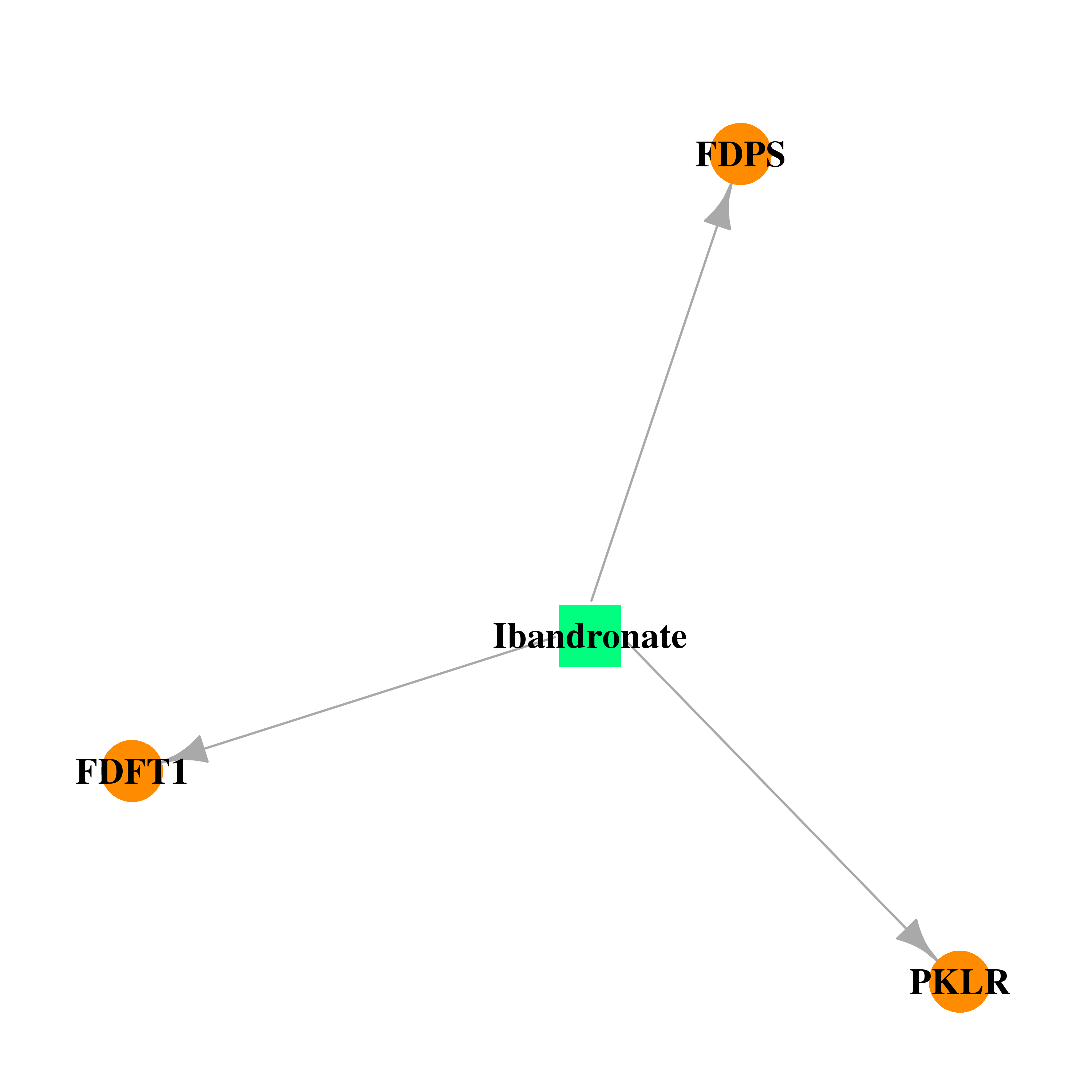 | 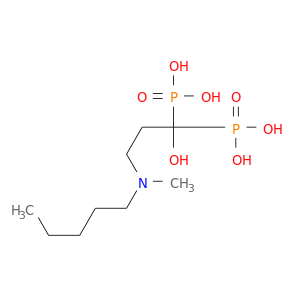 |
| DB00282 | pyruvate kinase, liver and RBC | approved | Pamidronate | 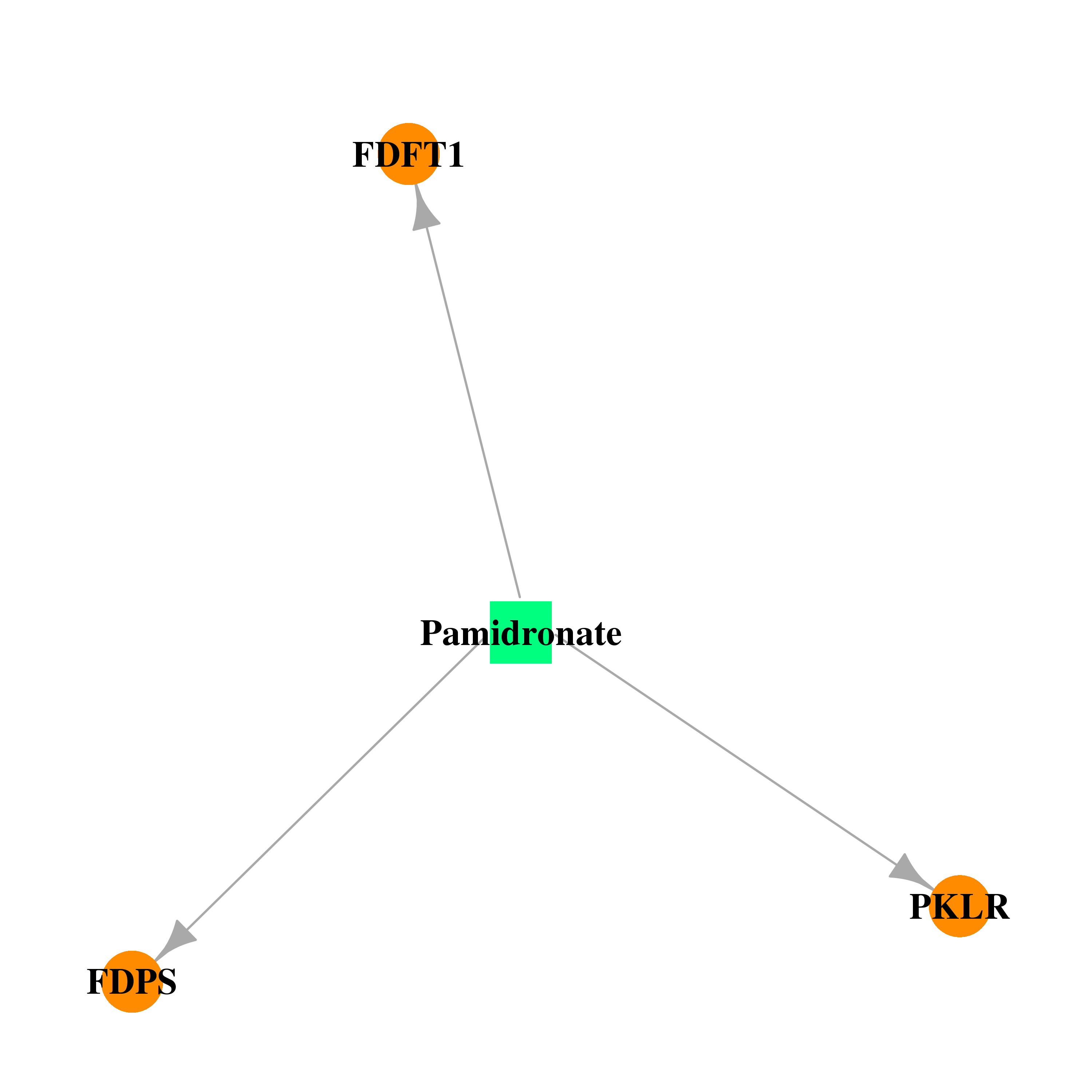 | 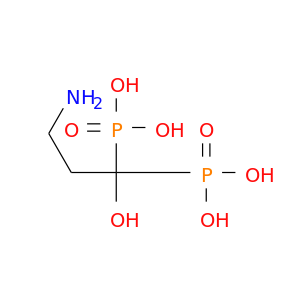 |
| DB00884 | pyruvate kinase, liver and RBC | approved; investigational | Risedronate | 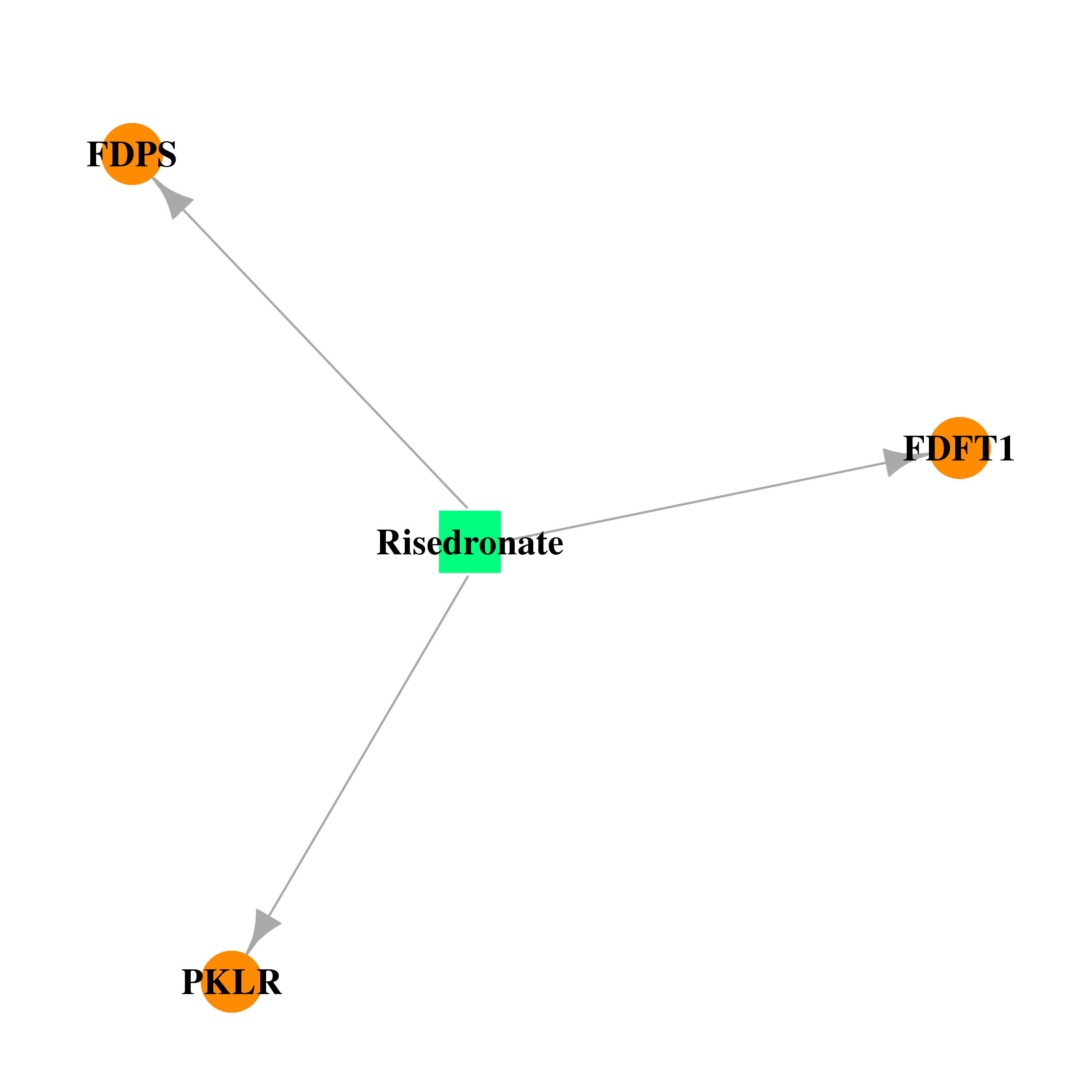 | 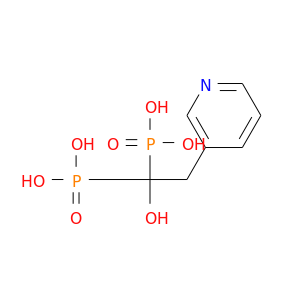 |
| DB00399 | pyruvate kinase, liver and RBC | approved | Zoledronate | 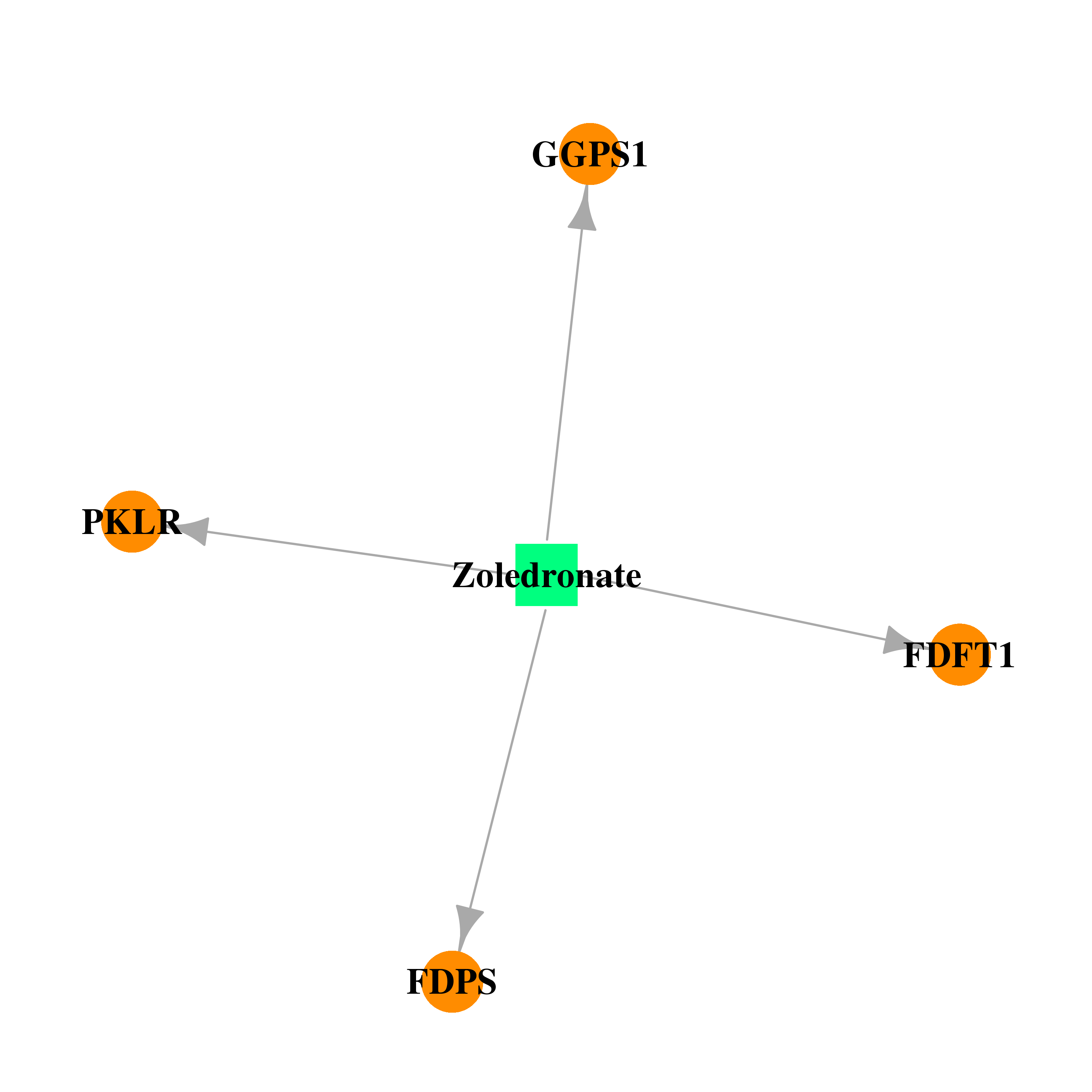 |  |
| Top |
| Cross referenced IDs for PKLR |
| * We obtained these cross-references from Uniprot database. It covers 150 different DBs, 18 categories. http://www.uniprot.org/help/cross_references_section |
: Open all cross reference information
|
Copyright © 2016-Present - The Univsersity of Texas Health Science Center at Houston @ |






